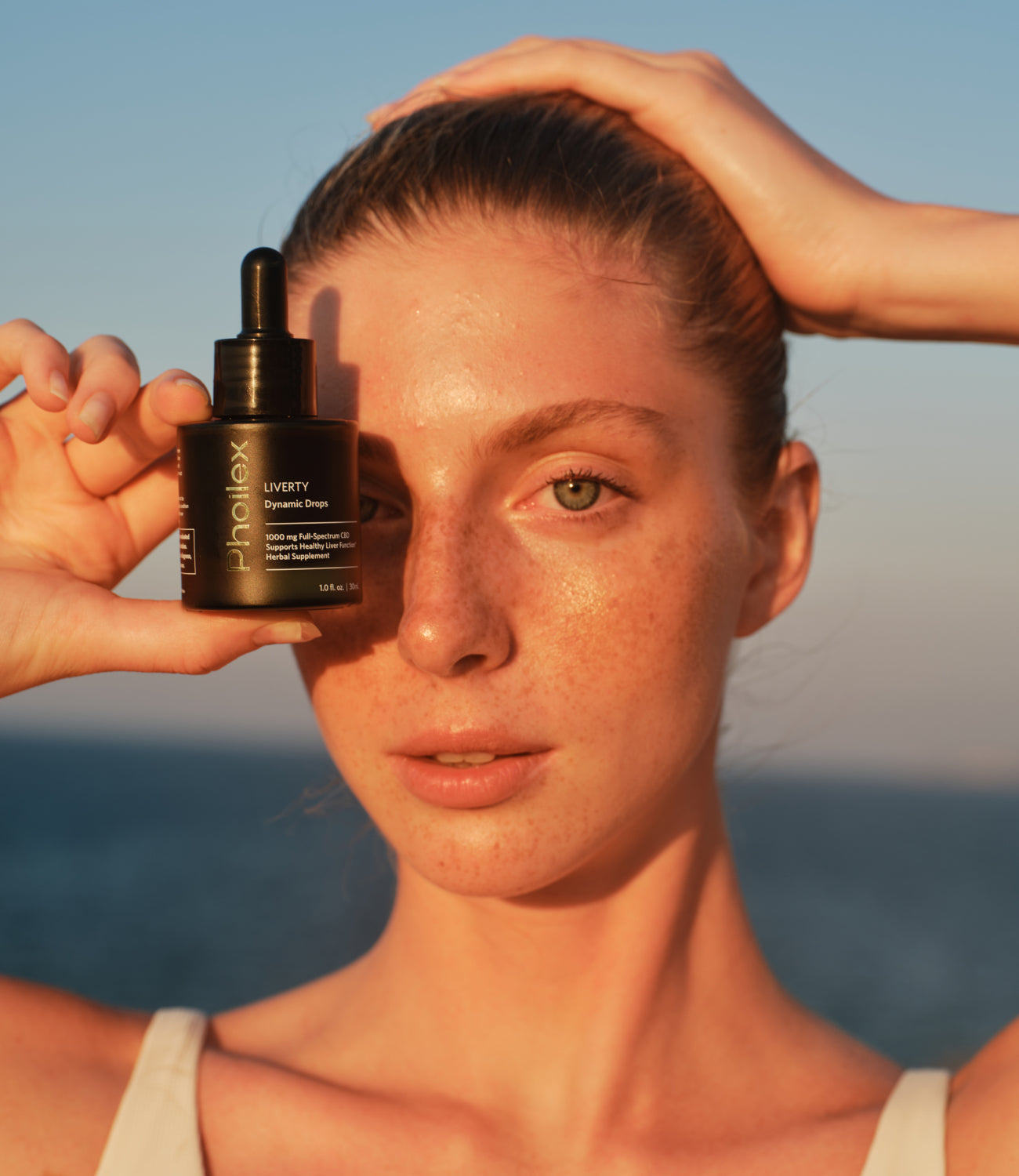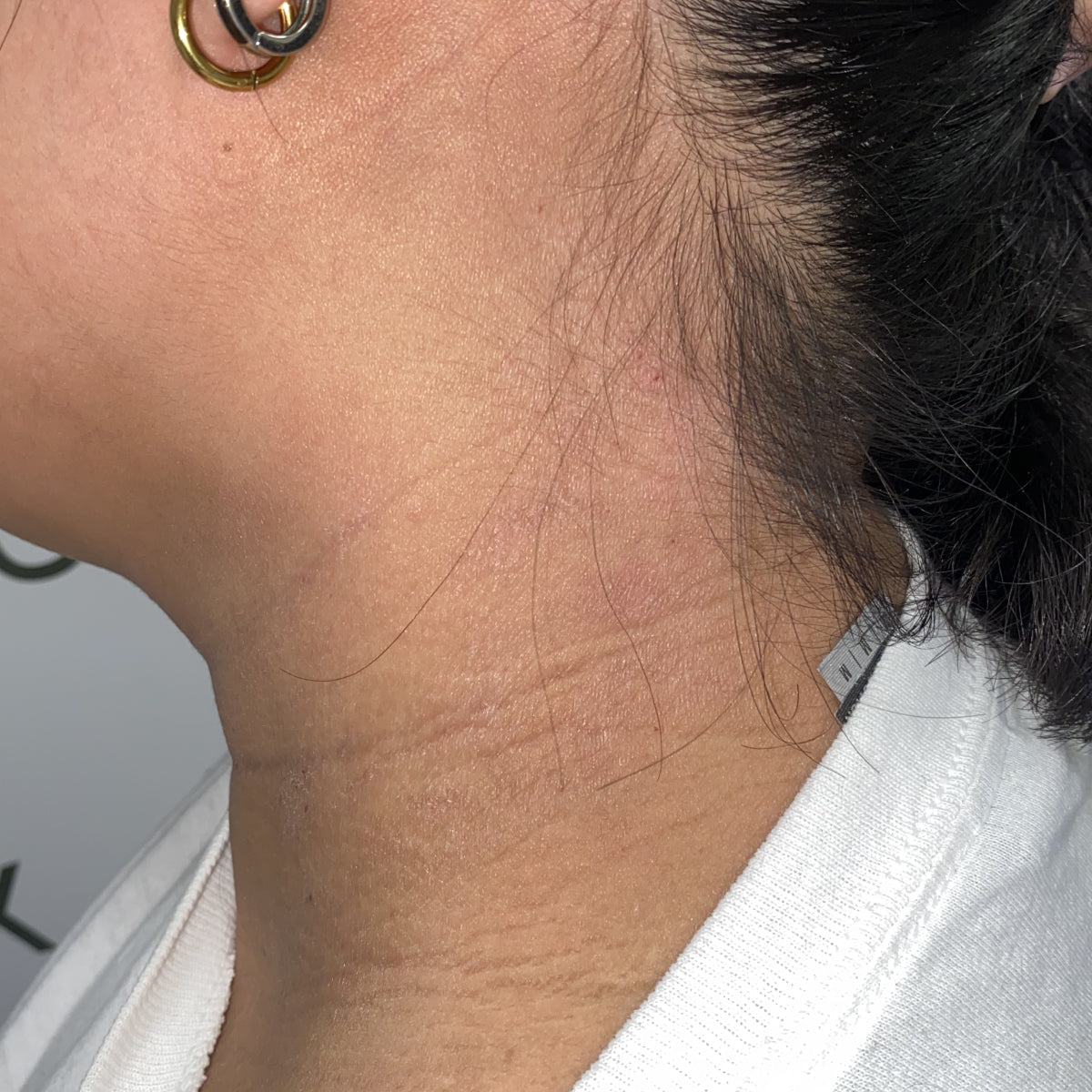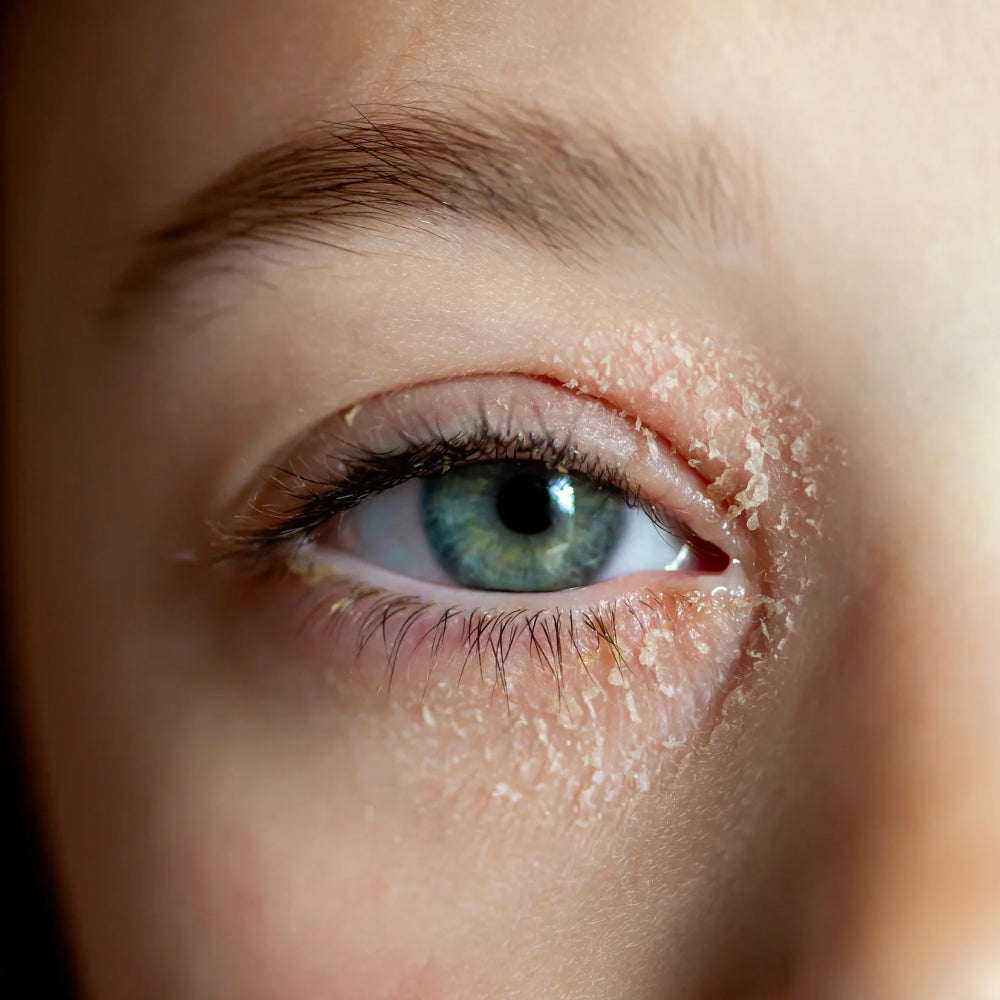Eczema flare-ups are periods when symptoms like redness, itching, dryness, and rashes intensify. While eczema is a chronic condition driven by genetics and an impaired skin barrier, flare-ups are not random. They are usually triggered by identifiable factors in your environment, lifestyle, or routine. Understanding what triggers your eczema and how to prevent exposure is the most effective way to reduce flare frequency and severity.
What an eczema flare-up looks like
Eczema flare-ups can vary, but common signs include:
- Intensely itchy skin, worse at night
- Red, inflamed patches or plaques
- Dry, scaly, or cracked skin
- Oozing or crusting in more severe cases
- Thickened skin from chronic scratching (lichenification)
Flare-ups can appear anywhere, but they commonly affect the hands, inner elbows, behind the knees, eyelids, neck, and face. In adults, hand eczema is particularly common due to irritant exposure. In infants, eczema often shows on the cheeks and scalp.
Common triggers of eczema flare-ups
Eczema flare-ups often result from a combination of:
- Irritants: soaps, detergents, fragrances, alcohol-based sanitizers
- Allergens: dust mites, pet dander, pollen, molds, nickel
- Climate: cold, dry air; sudden temperature changes; low humidity
- Sweat and heat: sweating can sting and worsen itching
- Stress: psychological stress can disrupt the skin barrier and immune response
- Infections: bacterial (like Staph), viral (cold sores), or fungal infections
- Food sensitivities: especially in children with moderate to severe eczema
- Hormonal changes: premenstrual or postpartum shifts
Environmental triggers and seasonal patterns
Season changes impact eczema. In winter, low humidity and indoor heating dry the skin, making flare-ups more frequent. In summer, heat and sweat can irritate and promote bacterial growth. Pollen season may worsen eczema if you have environmental allergies. Managing humidity (40–50% indoors), layering breathable fabrics, and adjusting moisturizers seasonally can reduce flares. See our Liverty Dynamic Drops here.
Lifestyle and skin-care triggers
Daily choices influence eczema:
- Harsh cleansers and hot showers strip your barrier. Opt for lukewarm water and fragrance-free, pH-balanced cleansers or non-soap washes.
- Fragrance and essential oils can irritate. Choose fragrance-free skin and laundry products labeled for sensitive skin.
- Rough fabrics like wool can trigger itch. Wear soft, breathable cotton or moisture-wicking layers next to skin.
- Overwashing hands can aggravate hand eczema. Use gentle washes, rinse well, pat dry, and apply a barrier cream after each wash.
- Occlusive hair and skin products with heavy fragrance or alcohol can irritate face and neck. Use noncomedogenic, fragrance-free options.
Food and allergy-related triggers
Food is not the primary driver for most adults with eczema. However, in young children with moderate to severe eczema, food allergens like cow’s milk, egg, peanut, soy, wheat, and sesame can contribute. Avoid blanket elimination diets without medical guidance, as they can cause nutritional deficiencies and worsen the skin barrier over time. If you suspect food triggers, discuss supervised testing and structured elimination with a clinician or registered dietitian. Environmental allergens like dust mites often play a larger role; encasing mattresses, washing bedding weekly in hot water, and reducing carpet and clutter can help.
Stress and sleep as flare drivers
Stress triggers biochemical changes that increase inflammation and itching. Poor sleep then amplifies stress, creating a cycle. Break it by:
- Establishing consistent sleep routines and cool, dark bedrooms
- Using nighttime itch strategies: moisturize before bed, wet wraps for severe areas, and short-term antihistamines if recommended
- Practicing brief daily stress management techniques such as diaphragmatic breathing, a 10-minute walk, or guided mindfulness
- Seeking mental health support when needed; psychological care can improve both quality of life and eczema control
How to prevent eczema flare-ups
Prevention centers on repairing and protecting the skin barrier, avoiding triggers, and controlling inflammation promptly. Use this framework:
- Know your triggers: Keep a simple flare diary noting products, weather, sweat, stress, foods, and exposures 24–72 hours before a flare. Patterns will emerge within a few weeks.
- Moisturize strategically: Apply a rich, fragrance-free emollient at least twice daily and within three minutes after bathing (the “soak and seal” method). Look for ceramides, petrolatum, glycerin, and hyaluronic acid. In very dry conditions, use thicker ointments at night.
- Gentle bathing: Short, lukewarm showers or baths (5–10 minutes). Use non-soap cleansers only where needed. Pat, don’t rub, then moisturize immediately.
- Barrier protection: For hands or high-friction spots, apply a barrier cream with dimethicone or petrolatum before exposure (work, cleaning, or outdoor activity). Wear cotton liners under gloves when using irritants.
- Smart clothing: Choose soft cotton layers and moisture-wicking fabrics for workouts. Remove sweaty clothes promptly, rinse skin, and moisturize.
- Home environment: Maintain indoor humidity around 40–50%, use HEPA filtration if allergic to dander or pollen, and reduce dust reservoirs.
- Sun and heat: Moderate sun may help some, but avoid burns and overheating. Use mineral sunscreens (zinc oxide or titanium dioxide) that are fragrance-free; patch test first.
- Infection control: Treat skin breaks promptly with gentle cleansing and emollients. If areas become increasingly painful, warm, oozing, or crusting with yellow honey-colored scabs, seek medical evaluation for possible infection.
Daily skin-care routine that works
Morning
- Cleanse only where needed with a gentle, fragrance-free cleanser.
- Apply a mid-weight moisturizer to damp skin; use thicker ointments on stubborn spots.
- If prescribed, apply anti-inflammatory medication to active lesions before moisturizer.
- Use mineral sunscreen on exposed areas.
Evening
- Take a brief lukewarm shower or bath with bath oil or colloidal oatmeal as tolerated.
- Immediately apply moisturizer head to toe.
- Spot-treat active patches with prescribed topical steroids or steroid-sparing agents as directed.
Weekly
- Consider bleach baths (only if advised by your clinician) for recurrent infections: typically 1/4 to 1/2 cup of regular-strength household bleach in a full bathtub for 10 minutes, then rinse and moisturize.
- Launder clothes and bedding with fragrance-free detergent; skip fabric softeners and dryer sheets.
Treatment options and when to see a dermatologist
Over-the-counter
- Moisturizers with ceramides, petrolatum, shea butter, and urea (low concentration) support barrier repair.
- Short-term use of low-potency hydrocortisone 1% can reduce mild flares on the body (avoid face/eyelids unless instructed).
- Anti-itch options like pramoxine or menthol lotions can help. Oral antihistamines may aid sleep but do not treat inflammation directly.
Prescription therapies
- Topical corticosteroids: first-line for flares. Use the lowest effective potency for the shortest time; follow fingertip unit guidance from your clinician.
- Nonsteroidal topicals: calcineurin inhibitors (tacrolimus, pimecrolimus) and PDE4 inhibitors (crisaborole) are helpful, especially for face and skin folds.
- Phototherapy: controlled UV light for widespread or refractory eczema.
- Systemics and biologics: for moderate-to-severe cases, options include dupilumab, tralokinumab, and JAK inhibitors (oral or topical) under specialist care.
Seek medical care if:
- Flares are frequent or severe despite good skin care
- You have signs of infection: fever, spreading redness, pus, or painful cracks
- Eczema significantly affects sleep, work, or school
- You’re unsure how to use or taper medications safely
Eczema in kids vs. adults: key differences
- Infants and toddlers: eczema often starts on cheeks and extensor surfaces. Food allergy is more likely to contribute in this age group, especially with severe eczema. Gentle routines and parental education are crucial.
- School-age children: hand eczema can emerge with increased activities. Emphasize moisturizers at school and barrier protection.
- Adults: hand and eyelid eczema are common due to irritants and cosmetics. Occupational exposures (healthcare, hairdressing, cleaning, food service) can drive persistent flares and may require job-specific adjustments.
Myths and facts about eczema flare-ups
- Myth: Eczema is just dry skin. Fact: It’s a chronic inflammatory condition with an impaired barrier; moisturizers help, but anti-inflammatory treatment is often needed.
- Myth: Natural products are always safer. Fact: Many natural oils and essential oils are irritants or allergens. Fragrance-free, tested formulations are safer.
- Myth: Steroids always thin the skin. Fact: Proper potency, correct application, and limited duration under guidance are safe and effective.
- Myth: Diet fixes eczema for everyone. Fact: Only a subset has food-related flares; indiscriminate restriction can harm.
Conclusion: Your action plan for calmer skin
Eczema flare-ups are manageable when you control triggers, protect the skin barrier, and treat inflammation quickly. Start with a consistent daily routine: short lukewarm bathing, immediate moisturizing, fragrance-free products, and smart clothing. Track your triggers, adjust for weather, and use prescribed treatments early in a flare rather than waiting. If eczema interferes with sleep, work, or comfort—or if infections recur—see a dermatologist to optimize therapy, including nonsteroidal topicals, phototherapy, or biologics. With a focused plan and steady habits, you can reduce flares, extend remission, and live more comfortably with eczema.
Read more

One of the most researched topics in modern dermatology is the "gut-skin axis." This concept posits that the health of your gut is directly linked to the health of your skin. Our gut contains trill...

Living with eczema or Psoriasis often feels like managing a moving target: a product works, until it doesn’t; a flare appears without warning. The most reliable way to ease symptoms and extend calm...
